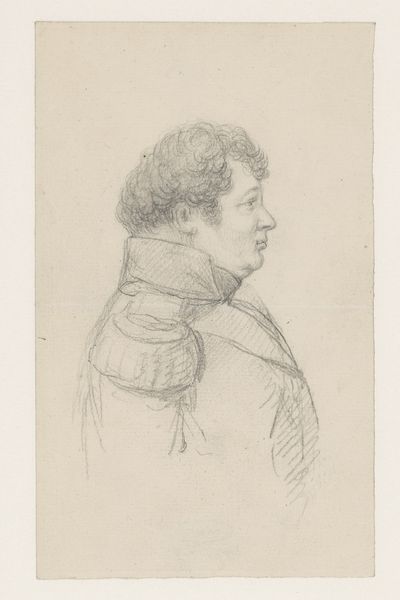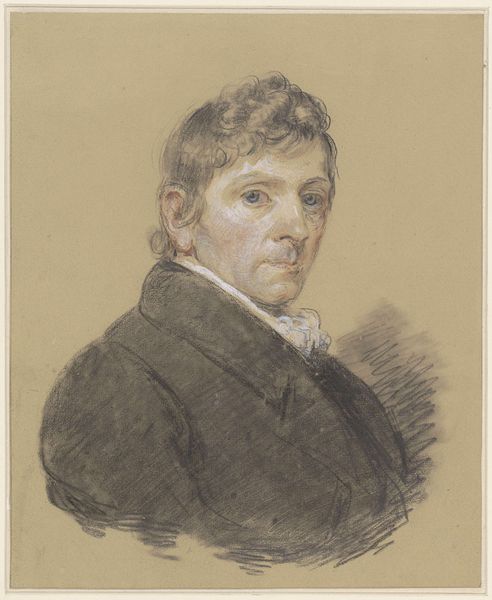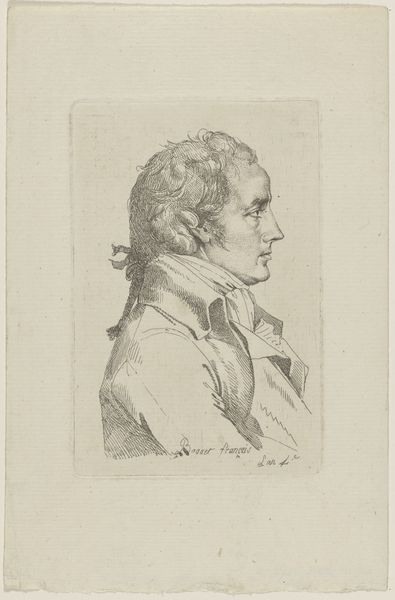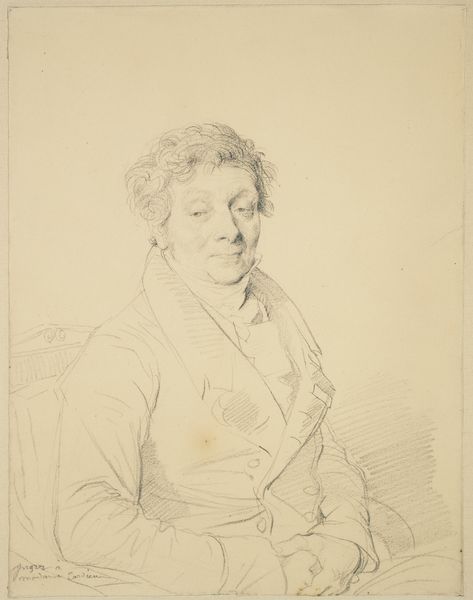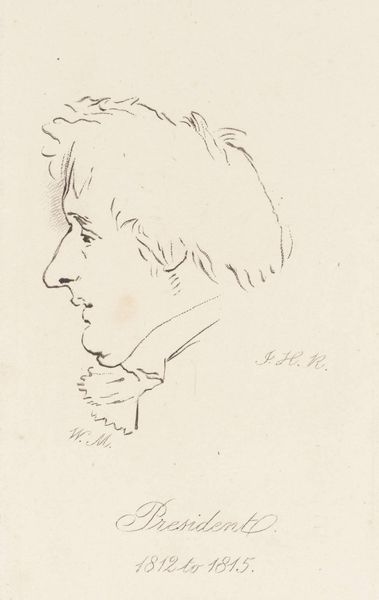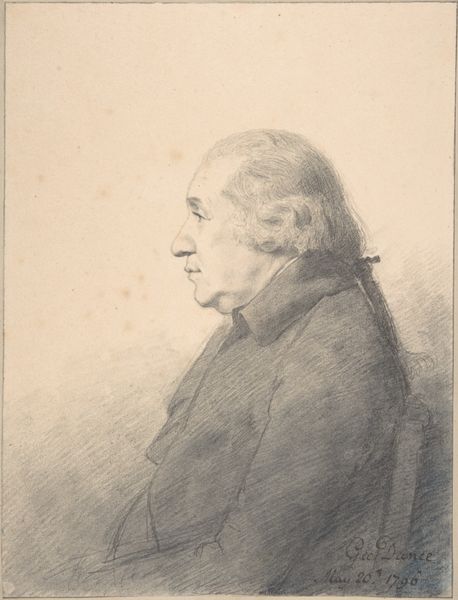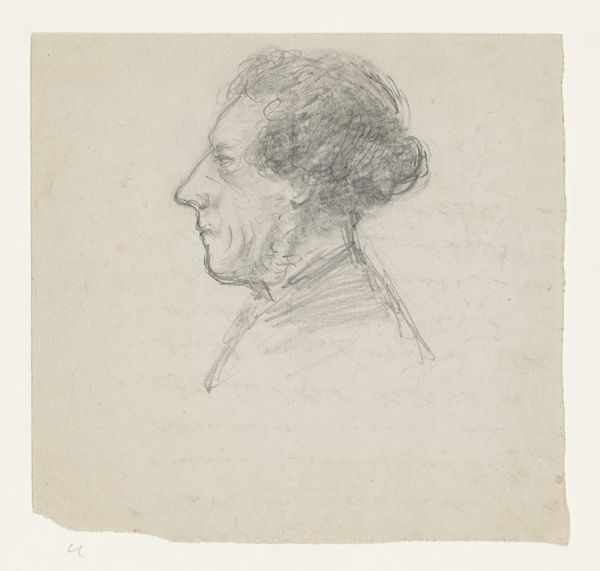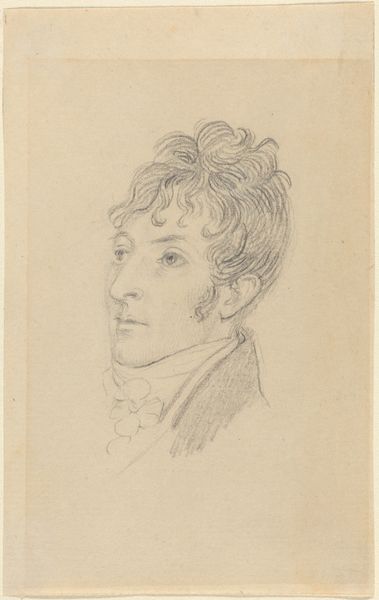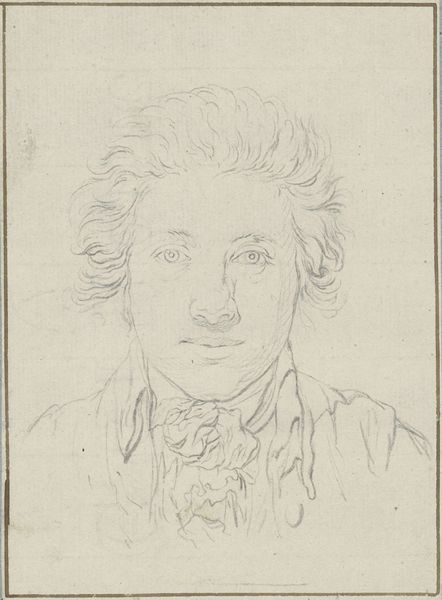
drawing, pencil, graphite
#
portrait
#
drawing
#
pencil drawing
#
pencil
#
graphite
#
portrait drawing
Dimensions: height 91 mm, width 80 mm
Copyright: Rijks Museum: Open Domain
Editor: So here we have Gijsbertus Craeyvanger's "Portret van Pieter Christoffel Wonder," made sometime between 1820 and 1895. It's a drawing in graphite and pencil, held at the Rijksmuseum. The subject's face seems to emerge delicately from the textured background. How would you interpret this piece? Curator: This piece interests me because of its focus on process. The visible pencil strokes reveal the labor involved in its creation, challenging notions of effortless genius. Notice the material presence of the graphite itself; the subtle gradations and textured layering speak to the artist's mastery of the medium, and perhaps, his access to increasingly refined materials. Consider also, the social context: portraiture at this time was often a marker of social status. Was this commissioned work, or something more personal, and what does that suggest about the relationship between artist and sitter? Editor: That's fascinating. It's easy to overlook the materiality when viewing something so seemingly simple as a pencil drawing. Curator: Exactly. How does focusing on the 'means of production' affect our understanding of the work? Does the use of graphite – a relatively accessible material – democratize the portrait, or does the skill involved reinforce existing hierarchies? Editor: I guess I hadn’t thought of it that way before. I was so focused on the face. But it really brings out new questions. Curator: Seeing art through the lens of material and social context opens a whole new realm of understanding and prompts inquiry. The simplicity invites closer inspection. Editor: Definitely. Thinking about art in terms of production and access is very revealing, thank you! Curator: My pleasure! Approaching art through a material lens always exposes layers often overlooked.
Comments
No comments
Be the first to comment and join the conversation on the ultimate creative platform.
